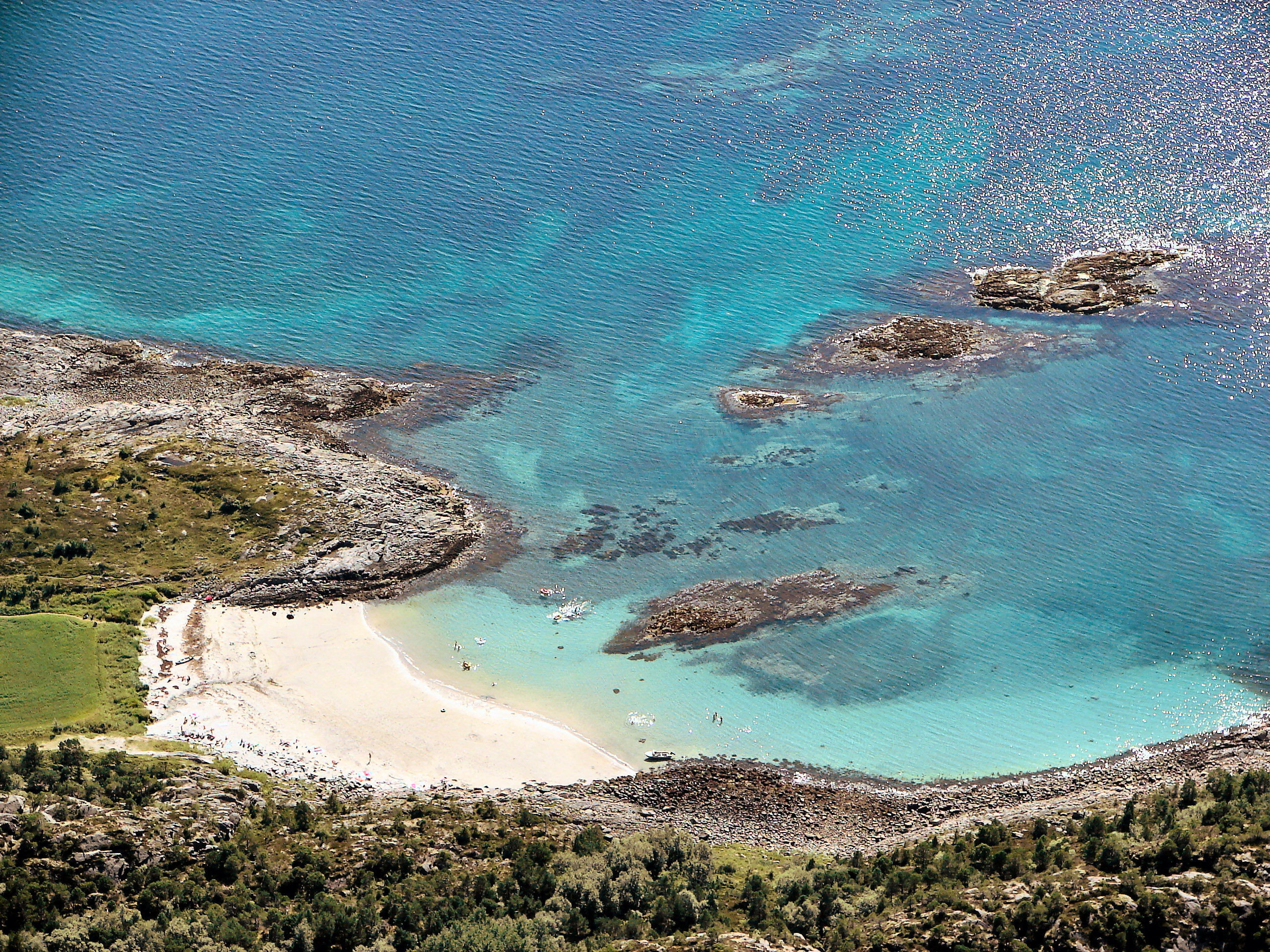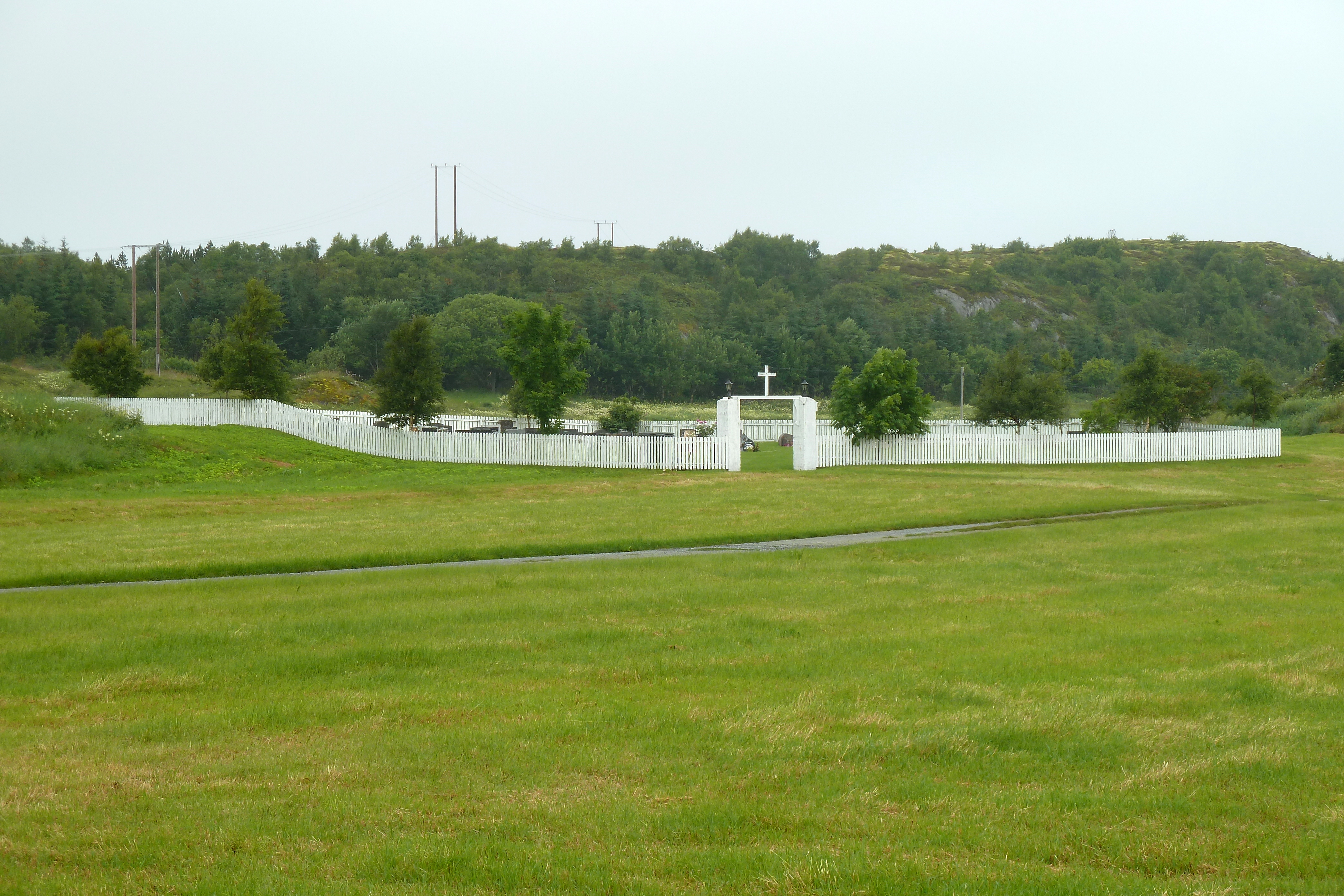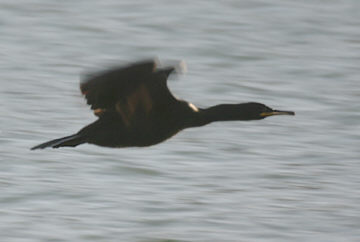|
Vegaøyan
or the is a group of islands in the Norwegian Sea corresponding roughly to the municipality of Vega. Since 2004, it has been a UNESCO World Heritage Site. This cluster of around 6,500 small islands in Nordland county, just south of the Arctic circle, surrounds the main island of Vega and has been inhabited since the Stone Age. Other islands in the group include Igerøya, Ylvingen, and Søla. Description The islands bear testimony to a distinctive frugal way of life based on fishing and the harvesting of the down of eider ducks, in an inhospitable environment. There are fishing villages, quays, eider houses (built for eider ducks to nest), farmland, and lighthouses. There is evidence of human settlement from the Stone Age onwards. By the 9th century, the islands had become an important centre for the supply of down, which appears to have accounted for around a third of the islanders' income. The Vega archipelago reflects the way generations of fishermen/farmers have, over ... [...More Info...] [...Related Items...] OR: [Wikipedia] [Google] [Baidu] |
Vega, Norway
Vega is a municipality in Nordland county, Norway. It is part of the Helgeland traditional region. The administrative centre of the municipality is the village of Gladstad. Other villages include Holand and Ylvingen. The municipality comprises about 6,500 islands in the Vega Archipelago. The main island of the municipality is the island of Vega, and it is also the largest at . Bremstein Lighthouse is located in the southwestern part of the municipality. The municipality is the 314th largest by area out of the 356 municipalities in Norway. Vega is the 320th most populous municipality in Norway with a population of 1,175. The municipality's population density is and its population has decreased by 6.4% over the previous 10-year period. General information The municipality of Vega was established on 1 January 1838 (see formannskapsdistrikt law). On 1 January 1965, the Skogsholmen area (population: 196) was transferred from Tjøtta Municipality to Vega Municipality. Then on ... [...More Info...] [...Related Items...] OR: [Wikipedia] [Google] [Baidu] |
Vega (island In Norway)
Vega is an island in Vega Municipality in Nordland county, Norway. The island is the largest island in the 6,500 islands in the Vegaøyan archipelago, all of which is a UNESCO World Heritage Site. The island lies in the Norwegian Sea, about west of the mainland of Norway. The islands of Igerøya and Ylvingen lie between Vega and the mainland. The main villages on the island are Gladstad, the administrative centre of the municipality, and Holand. The southwestern part of the island is mountainous, with the highest point being the tall Trollvasstinden. The rest of the island rather flat and marshy. The island is only accessible by boat. There is a regular ferry route from the island to the island of Ylvingen and to the mainland. The island of Vega is connected to the neighboring island of Igerøya by a short bridge. There is also a ferry from Igerøya to the village of Tjøtta which is just south of the town of Sandnessjøen. Media gallery Nes.jpg Neshrbr.jpg Seahou ... [...More Info...] [...Related Items...] OR: [Wikipedia] [Google] [Baidu] |
Ylvingen
Ylvingen is an island in the municipality of Vega in Nordland county, Norway. The island lies just off the west coast of Norway, between the island of Vega and the mainland. In 2017, there were 25 residents on the island. The island is connected by fast ferry to the mainland towns of Brønnøysund and Sandnessjøen, and to the island of Vega and the mainland by car ferry, all operated by Torghatten Trafikkselskap. The landscape is relatively flat, yet rocky in many places. The highest point on the island is the tall mountain Stornonshaugen in the middle of the island. The island has a relatively large moose population. The residents of the island earn a living by farming and fishing and the island has increasing tourist traffic. History During the Second World War, the island was used by the German Armed Forces as an emplacement and had prisoners of war from Russia, Serbia, and Poland doing forced labor. The television series '' Himmelblå'' was filmed on the island. See ... [...More Info...] [...Related Items...] OR: [Wikipedia] [Google] [Baidu] |
Igerøya
Igerøya is an island in Vega Municipality in Nordland county, Norway. The island is located just northeast of the island of Vega. The two islands are connected by a series of bridges over small islands. Igerøya is connected to the island of Tjøtta by a regular ferry route. In 2015, the island had 91 residents. Most of the inhabitants of the island live along the eastern side of the island. See also *List of islands of Norway This is a list of islands of Norway sorted by name. For a list sorted by area, see List of islands of Norway by area. A * Alden * Aldra * Algrøy * Alsta * Altra * Anda * Andabeløya * Andørja * Andøya, Vesterålen * Andøya, Agder * ... References Vega, Norway Islands of Nordland {{Nordland-island-stub ... [...More Info...] [...Related Items...] OR: [Wikipedia] [Google] [Baidu] |
Nordland
Nordland (; smj, Nordlánnda, sma, Nordlaante, sme, Nordlánda, en, Northland) is a county in Norway in the Northern Norway region, the least populous of all 11 counties, bordering Troms og Finnmark in the north, Trøndelag in the south, Norrbotten County in Sweden to the east, Västerbotten County to the south-east, and the Atlantic Ocean (Norwegian Sea) to the west. The county was formerly known as ''Nordlandene amt''. The county administration is in the town of Bodø. The remote Arctic island of Jan Mayen has been administered from Nordland since 1995. In the southern part of the county is Vega, listed on the UNESCO World Heritage Site list. Districts The county is divided into traditional districts. These are Helgeland in the south (south of the Arctic Circle), Salten in the centre, and Ofoten in the north-east. In the north-west lie the archipelagoes of Lofoten and Vesterålen. Geography Nordland is located along the northwestern coast of the Scandinavian pe ... [...More Info...] [...Related Items...] OR: [Wikipedia] [Google] [Baidu] |
Greylag Goose
The greylag goose or graylag goose (''Anser anser'') is a species of large goose in the waterfowl family Anatidae and the type species of the genus ''Anser''. It has mottled and barred grey and white plumage and an orange beak and pink legs. A large bird, it measures between in length, with an average weight of . Its distribution is widespread, with birds from the north of its range in Europe and Asia migrating southwards to spend the winter in warmer places. It is the type species of the genus ''Anser'' and is the ancestor of most breeds of domestic goose, having been domesticated at least as early as 1360 BC. The genus name is from ''anser'', the Latin for "goose". Greylag geese travel to their northerly breeding grounds in spring, nesting on moorlands, in marshes, around lakes and on coastal islands. They normally mate for life and nest on the ground among vegetation. A clutch of three to five eggs is laid; the female incubates the eggs and both parents defend and rear ... [...More Info...] [...Related Items...] OR: [Wikipedia] [Google] [Baidu] |
Barnacle Goose
The barnacle goose (''Branta leucopsis'') is a species of goose that belongs to the genus '' Branta'' of black geese, which contains species with largely black plumage, distinguishing them from the grey ''Anser'' species. Despite its superficial similarity to the brant goose, genetic analysis has shown it is an eastern derivative of the cackling goose lineage. Taxonomy and naming The barnacle goose was first classified taxonomically by Johann Matthäus Bechstein in 1803. ''Branta'' is a Latinised form of Old Norse ''Brandgás'', "burnt (black) goose" and the specific epithet is from the Ancient Greek ''leukos'' "white", and ''opsis'' "faced". The barnacle goose and the similar brant goose were previously considered one species, and were formerly believed to spawn from the goose barnacle. This gave rise to the English name of the barnacle goose and the scientific name of the brant. It is sometimes claimed that the word comes from a Celtic word for "limpet", but the sense-histor ... [...More Info...] [...Related Items...] OR: [Wikipedia] [Google] [Baidu] |
Common Eider
The common eider (pronounced ) (''Somateria mollissima''), also called St. Cuthbert's duck or Cuddy's duck, is a large ( in body length) sea-duck that is distributed over the northern coasts of Europe, North America and eastern Siberia. It breeds in Arctic and some northern temperate regions, but winters somewhat farther south in temperate zones, when it can form large flocks on coastal waters. It can fly at speeds up to . The eider's nest is built close to the sea and is lined with eiderdown, plucked from the female's breast. This soft and warm lining has long been harvested for filling pillows and quilts, but in more recent years has been largely replaced by down from domestic farm-geese and synthetic alternatives. Although eiderdown pillows or quilts are now a rarity, eiderdown harvesting continues and is sustainable, as it can be done after the ducklings leave the nest with no harm to the birds. Taxonomy The common eider was formally named by the Swedish naturalist Carl ... [...More Info...] [...Related Items...] OR: [Wikipedia] [Google] [Baidu] |
Common Loon
The common loon or great northern diver (''Gavia immer'') is a large member of the loon, or diver, family of birds. Breeding adults have a plumage that includes a broad black head and neck with a greenish, purplish, or bluish sheen, blackish or blackish-grey upperparts, and pure white underparts except some black on the undertail coverts and vent. Non-breeding adults are brownish with a dark neck and head marked with dark grey-brown. Their upperparts are dark brownish-grey with an unclear pattern of squares on the shoulders, and the underparts, lower face, chin, and throat are whitish. The sexes look alike, though males are significantly heavier than females. During the breeding season, loons live on lakes and other waterways in Canada; the northern United States (including Alaska); and southern parts of Greenland and Iceland. Small numbers breed on Svalbard and sporadically elsewhere in Arctic Eurasia. Common loons winter on both coasts of the US as far south as Mexico, and on ... [...More Info...] [...Related Items...] OR: [Wikipedia] [Google] [Baidu] |
Great Cormorant
The great cormorant (''Phalacrocorax carbo''), known as the black shag in New Zealand and formerly also known as the great black cormorant across the Northern Hemisphere, the black cormorant in Australia, and the large cormorant in India, is a widespread member of the cormorant family of seabirds. The genus name is Latinised Ancient Greek, from φαλακρός (''phalakros'', "bald") and κόραξ (''korax'', "raven"), and ''carbo'' is Latin for "charcoal". It breeds in much of the Old World, Australia, and the Atlantic Ocean, Atlantic coast of North America. Taxonomy and etymology The long white-breasted cormorant ''P. c. lucidus'' found in sub-Saharan Africa, has a white neck and breast. It is often treated as a full species, ''Phalacrocorax lucidus'' (e.g. , ). In addition to the Australasian and African forms, ''Phalacrocorax carbo novaehollandiae'' and ''P. c. lucidus'' mentioned above, other geographically distinct subspecies are recognised, including ''P. c. sinensis' ... [...More Info...] [...Related Items...] OR: [Wikipedia] [Google] [Baidu] |
European Shag
The European shag or common shag (''Gulosus aristotelis'') is a species of cormorant. It is the only member of the monotypic genus ''Gulosus''. It breeds around the rocky coasts of western and southern Europe, southwest Asia and north Africa, mainly wintering in its breeding range except for the northernmost birds. In Britain this seabird is usually referred to as simply the shag. The scientific genus name derives from the Latin for glutton. The species name ''aristotelis'' commemorates the Greek philosopher Aristotle. Taxonomy The European shag was formerly classified within the genus ''Phalacrocorax'', but a 2014 study found it to be significantly more diverged than the clade containing ''Phalacrocorax'' and ''Urile'', but basal to the clade containing ''Nannopterum'' and ''Leucocarbo'', and thus classified it in its own genus, ''Gulosus''. The IOC followed this classification in 2021. ''Gulosus'' is thought to have split from the ''Nannopterum''-''Leucocarbo'' clade betwe ... [...More Info...] [...Related Items...] OR: [Wikipedia] [Google] [Baidu] |
Important Bird Area
An Important Bird and Biodiversity Area (IBA) is an area identified using an internationally agreed set of criteria as being globally important for the conservation of bird populations. IBA was developed and sites are identified by BirdLife International. There are over 13,000 IBAs worldwide. These sites are small enough to be entirely conserved and differ in their character, habitat or ornithological importance from the surrounding habitat. In the United States the Program is administered by the National Audubon Society. Often IBAs form part of a country's existing protected area network, and so are protected under national legislation. Legal recognition and protection of IBAs that are not within existing protected areas varies within different countries. Some countries have a National IBA Conservation Strategy, whereas in others protection is completely lacking. History In 1985, following a specific request from the European Economic Community, Birdlife International ... [...More Info...] [...Related Items...] OR: [Wikipedia] [Google] [Baidu] |


_head.jpg)

.jpg)


